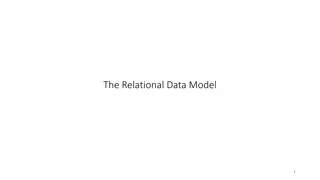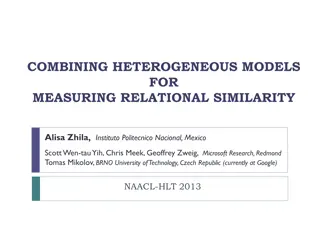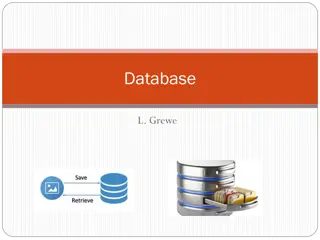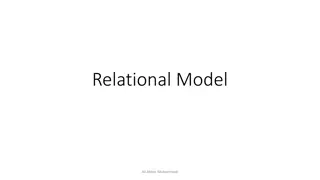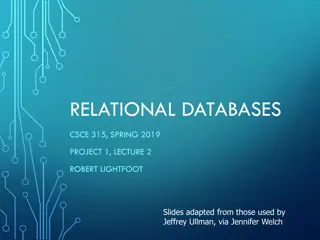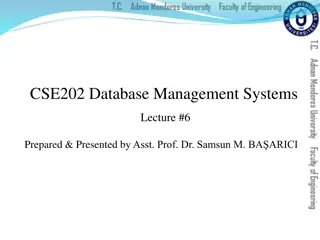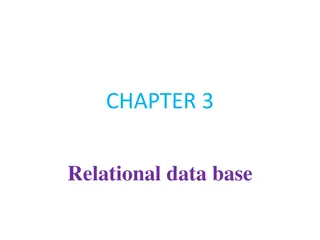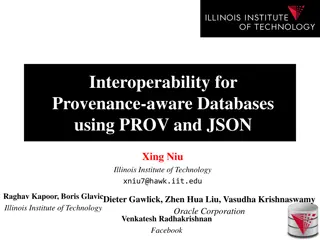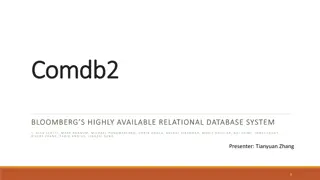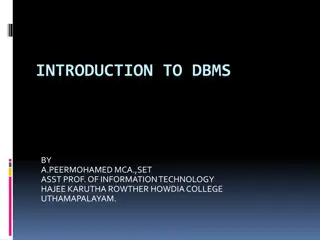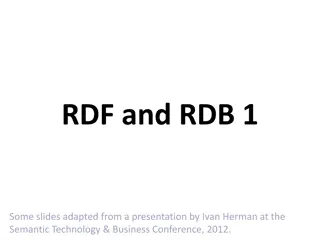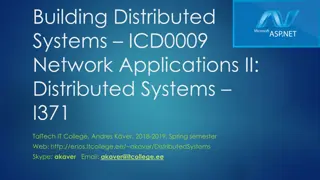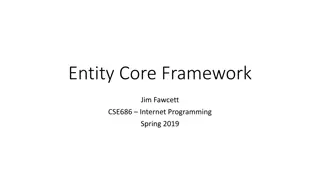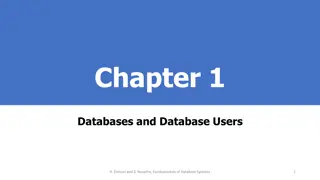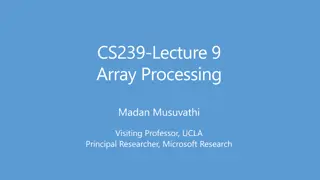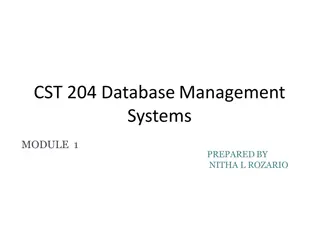Understanding Relational Database Management Systems
Dive into the world of database systems with a focus on relational structures, entities, properties, and relationships. Explore the types of database systems, the representation of entities in tables, and the constraints and types of relationships that govern data connectivity. Gain insights into organizing data coherently and efficiently in various DBMS environments.
Download Presentation

Please find below an Image/Link to download the presentation.
The content on the website is provided AS IS for your information and personal use only. It may not be sold, licensed, or shared on other websites without obtaining consent from the author. Download presentation by click this link. If you encounter any issues during the download, it is possible that the publisher has removed the file from their server.
E N D
Presentation Transcript
INLS 623 DATABASE SYSTEMS II Instructor: Dr. Carter
DATABASE MANAGEMENT SYSTEM Database: Logically Coherent Collection of related data
TYPES OF DATABASE SYSTEMS Relational Graph Object-oriented
RELATIONAL DATABASE SYSTEMS IN WIDE USE Three Major Database Management Systems in wide use Oracle - Large, commercial, enterprise-scale, very very tweakable MySql - Simpler but very fast and scalable - commercial open source SqlServer - Very nice - from Microsoft (also Access) Postgres Open source, enterprise scale SQLite Very small, mostly used for one user
RELATIONAL DATABASE Review What is an Entity? An object of interest with properties or attributes Give some examples of entities? University domain:student, lecturer, course, grade, room, facility, year-of-study, major, department,
ENTITIES HAVE PROPERTIES Properties have types Types: number, string, blob In a relational DBMS, how do we represent entities?
REPRESENT ENTITIESAS TABLES Store data in rows and columns All tables have a name Each column in the table has: A name (property) A type Each row is a record Records contain the data
TABLES Table Name: People Columns Rows Tables can be related to one another
RELATIONSHIPS A constraint between two entities Examples? Each student has one grade per course A student can take multiple courses Types of relationships one-to-one many-to-one many-to-many
TYPESOF RELATIONSHIPS 1:1 Each DEPT can employ only 1 EMPL Each EMPL can work for only 1 DEPT 1:N Each DEPT can employ any number of EMPL Each EMPL can work for only 1 DEPT N:1 Each DEPT can employ only 1 EMPL Each EMPL can work for any number of DEPT N:M Each DEPT can employ any number of EMPL Each EMPL can work for any number of DEPT
KEYS: MORE CONSTRAINTS Primary Key Secondary Key(s) Candidate Key(s) Foreign Key(s)
PRIMARY KEY CONSTRAINT Uniquely identifies each record in a database table. Primary keys must contain unique values. A primary key column cannot contain NULL values. Most tables should have a primary key, and each table can have only ONE primary key.
SECONDARYAND CANDIDATE KEYS Sometimes there are more than one key for a relation. Database Administrator chooses the primary key. The other keys are called secondary keys. The secondary and primary keys are called candidate keys.
FOREIGN KEYS Capture relationships across entities(tables). A FOREIGN KEY in one table points to a PRIMARY KEY in another table.
TOPICS WEWILL COVER (CAN CHANGE) Review Database Design Normal Form Database Indexing Database Tuning Triggers XML Database development on the Internet Non-relational databases
MYSQL Mysql http://dev.mysql.com/downloads/ MySQL Community Server Mysql Workbench Visual tool to manager mysql databases http://dev.mysql.com/downloads/workbench/
RESOURCES http://www.w3schools.com/sql/



